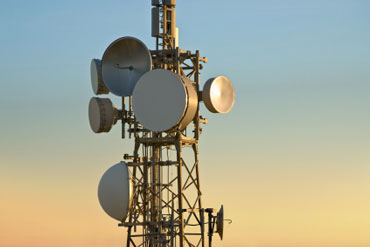May 11, 2016
Connected health is a model for healthcare delivery that uses technology to provide healthcare remotely. Connected health aims to increase opportunities for patients to engage with health care providers. Also, given the fact that medical costs are rising exponentially, healthcare professionals need to find more efficient ways of managing healthcare for an aging population. One of the new strategies to address this challenge is to connect the right information to the right people at the right time using voice, video and data communications.
The role of cellular networks and WiFi communications in the Connected Health model is growing substantially. Video conferencing and video remote interpreting (VRI) through face-to-face video calls on iPads and tablets is becoming more commonplace. Advances in 4G/LTE technologies provide the bandwidth necessary to facilitate this type of communication.
Research by Parks Associates and AARP finds that 117 million Americans will need caregiving assistance by 2020, either as care recipients or family caregivers. Currently more than 80% of caregivers in U.S. broadband households spend over an hour a day performing their caregiving tasks, and as their numbers increase, the demand for connected health solutions to alleviate their workload will increase.
Another study by Parks Associates predicts that 50% of North American broadband households will be smart homes by 2020. Controlling HVAC and surveillance were the early smart home features. Now add the ability to start your wash, lock your doors, and monitor the health of your loved one from afar.
Per the Healthcare Information and Management System Society, "...thanks to advances in machine-to-machine (M2M) technology, patients who suffer from chronic medical conditions no longer have to spend their time driving to appointments just to deal with routine monitoring. Instead, patients can check their blood sugar and pressure, oxygen levels, weight, and other vitals at home. Once their information has been recorded, their levels are wirelessly transmitted to their healthcare providers. This same information can even be sent to patients' loved ones to help patients track health status and progress. M2M communications will help reduce risk when the patient is sent home, bridging the gap by providing real-time data to clinicians..."
The increase of mobile apps for health care (mHealth), part of the Connected Health model, has provided education and monitoring to consumers, most notably with the explosion of wearables from companies like Fitbit and Jawbone. The benefits however are expanding to more difficult diagnosis such as Parkinson's disease and the planning and follow up of cataract surgery.
The true adoption of Connected Health will create efficiencies, reduce costs, and change the delivery of patient care. It is a fundamental change to the way health care will be implemented in the future.
Contact Direct Network Services to learn what is needed to ready your health care facility for Connected Health.
